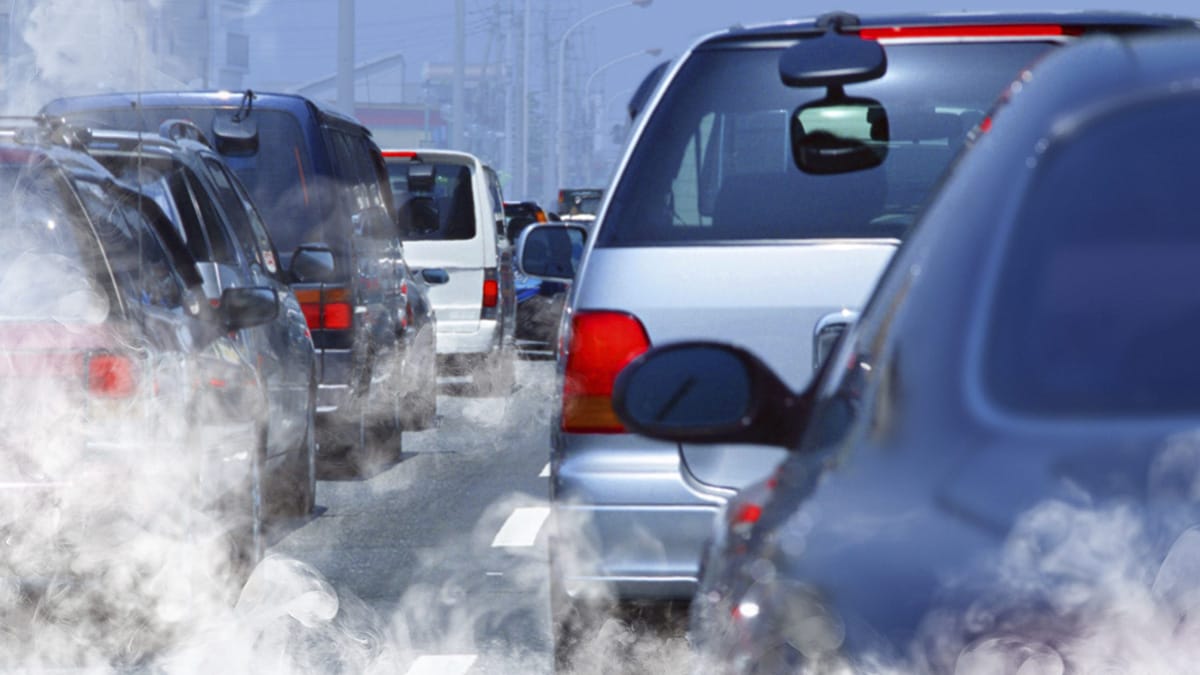What to know
- Outdoor air quality has improved since the 1990s, but many challenges remain in protecting Americans from air quality problems.
- The EPA regulates six pollutants as “criteria” air pollutants. It regulates them using human health-based and environmentally based criteria. Ground-level ozone and particle pollution are two of these criteria pollutants. The other pollutants are carbon monoxide, lead, nitrogen oxides, and sulfur oxides.

The six criteria air pollutants
See below for more information.
See below for more information.
Wildfire smoke and volcanic air pollution
Protect yourself from wildfire smoke
When wildfires burn near you, smoke can reach your community.
Volcanic air pollution
Information about potential health effects caused by volcanic ash and gases, and precautions you can take.
Additional information on ozone & particulate matter
Ozone
If you have a respiratory condition like asthma or COPD, ozone can make your symptoms worse. Carefully follow your asthma action plan when ozone levels are high.
Ozone has been linked to:
- Coughing and pain when taking a deep breath
- Lung and throat irritation
- Wheezing and trouble breathing during exercise or outdoor activities
Ozone can affect anyone, but it bothers some people more than others. People most likely to be bothered by ozone include:
- People with asthma or other lung diseases
- Older adults
- People who exercise or work hard outside
- Babies and children
When the Air Quality Index predicts ground-level ozone levels will be high, follow these steps:
- Spend more time indoors, where ozone levels are usually lower.
- Choose easier outdoor activities (like walking instead of running) so you don't breathe as hard.
- Plan outdoor activities at times when ozone levels are lower (usually in the morning and evening).
Particle Pollution (Particulate Matter)
Particle pollution, also called particulate matter, is made up of particles (tiny pieces) of solids or liquids in the air. These particles include:
- Dust
- Dirt
- Soot
- Smoke
- Drops of liquid
Some particles are big enough or dark enough to see, like smoke. Others are so small that you can't see them.
Breathing in particle pollution can be harmful to your health. Larger particles, called PM10, irritate the eyes, nose, and throat. Dust from roads, farms, dry riverbeds, construction sites, and mines are types of PM10.
Smaller particles, called PM2.5, are more dangerous because they can get into the deep parts of your lungs — or even into your blood.
Particle pollution can affect anyone, but it bothers some people more than others. People most likely to be bothered by particle pollution include:
- People with lung diseases like asthma or COPD
- People with heart disease
- People with diabetes
- Older adults
- Babies and children
If you have asthma, particle pollution can make your symptoms worse. Carefully follow your asthma action plan on days when pollution levels are high.
Particle pollution has been linked to:
- Eye irritation
- Lung and throat irritation
- Trouble breathing
- Lung cancer
- Heart attacks and other forms of heart disease
- Problems with babies at birth, like low birth weight
When the Air Quality Index predicts particulate pollution levels will be high, follow these steps:
- Spend more time indoors, where particle pollution levels are usually lower.
- Choose easier outdoor activities (like walking instead of running) so you don't breathe as hard.
- Avoid busy roads and highways where PM is usually worse because of emissions from cars and trucks.
Saharan dust
one type of particulate pollution
Saharan dust comes from the Sahara Desert in Northern Africa. Thunderstorms and cyclones produce high-speed winds that lift the dust and transport it thousands of miles.
Saharan dust transported to the United States usually peaks from late June through mid-August. In the United States, the dust mainly affects Puerto Rico, the U.S. Virgin Islands, and southern states including Florida and Texas.
